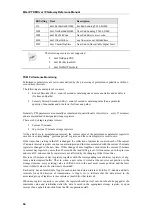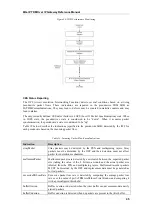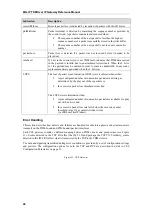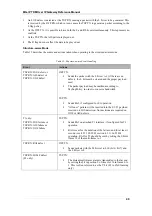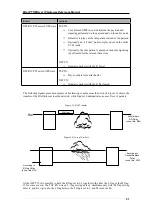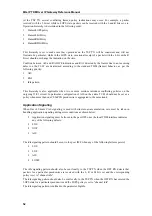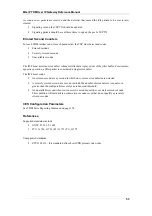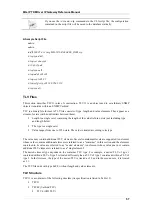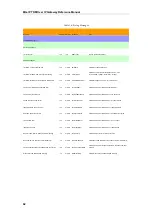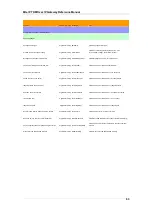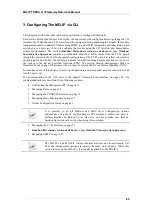
MG-IP TDM Over IP Gateway Reference Manual
49
1.
An LOS defect is detected at the TSP RX, causing a packet with the L bit set to be generated. This
is received by the IWF RX, which in turn, causes the TSP TX to generate a packet according to the
L flag policy.
2.
At the IWF TX, it is possible to have both the L and R bits set simultaneously. This represents no
conflicts.
3.
At the TSP TX, the AIS pattern is played out.
4.
The R flag does not affect the data to be played out.
Structure-aware Mode
Table 12 describes the events and actions taken when operating in the structure-aware mode.
Table 12: Structure-aware Event Handling
Event
Actions
TSP RX: LOS defect or
TSP RX: AIS defect or
TSP RX: OOF defect
IWF TX:
Sends the packet with the L bit set to 1 (if there are no
defects, the L bit must be cleared and the proper payload
sent)
The packet payload may be omitted according to
PaySupPolicy, in order to conserve bandwidth
TSP TX:
Sends RAI, if configured for E1 operation
“All ones” pattern will be inserted into the E1/T1 payload
received on LOS detection. No insertions are required on
OOF or AIS defects
T1 only:
TSP RX: LOS failure or
TSP RX: AIS failure or
TSP RX: OOF failure
TSP TX:
Sends RAI on attached T1 interface, if configured for T1
operation
RAI is sent for the duration of the failure, and for at least 1
second (see t1.231.02-2003 section 4.5.1). In T1 D4
operation, RAI for T1 should be sent by setting the S bit of
frame 12 of the multi-frame to 1
TSP RX: RAI defect
IWF TX:
Sends packets with the M bits set to b10 (bit 6, bit 7) and
the L bit set to 0
TSP RX: LOMF defect
(E1 only)
TSP TX:
The distant multi-frame alarm is transmitted to the far end
by setting the bit in position 2 of time slot 16 in frame 0 to
1. This is often referred to as the Y bit (E1 in CAS framing
only)










